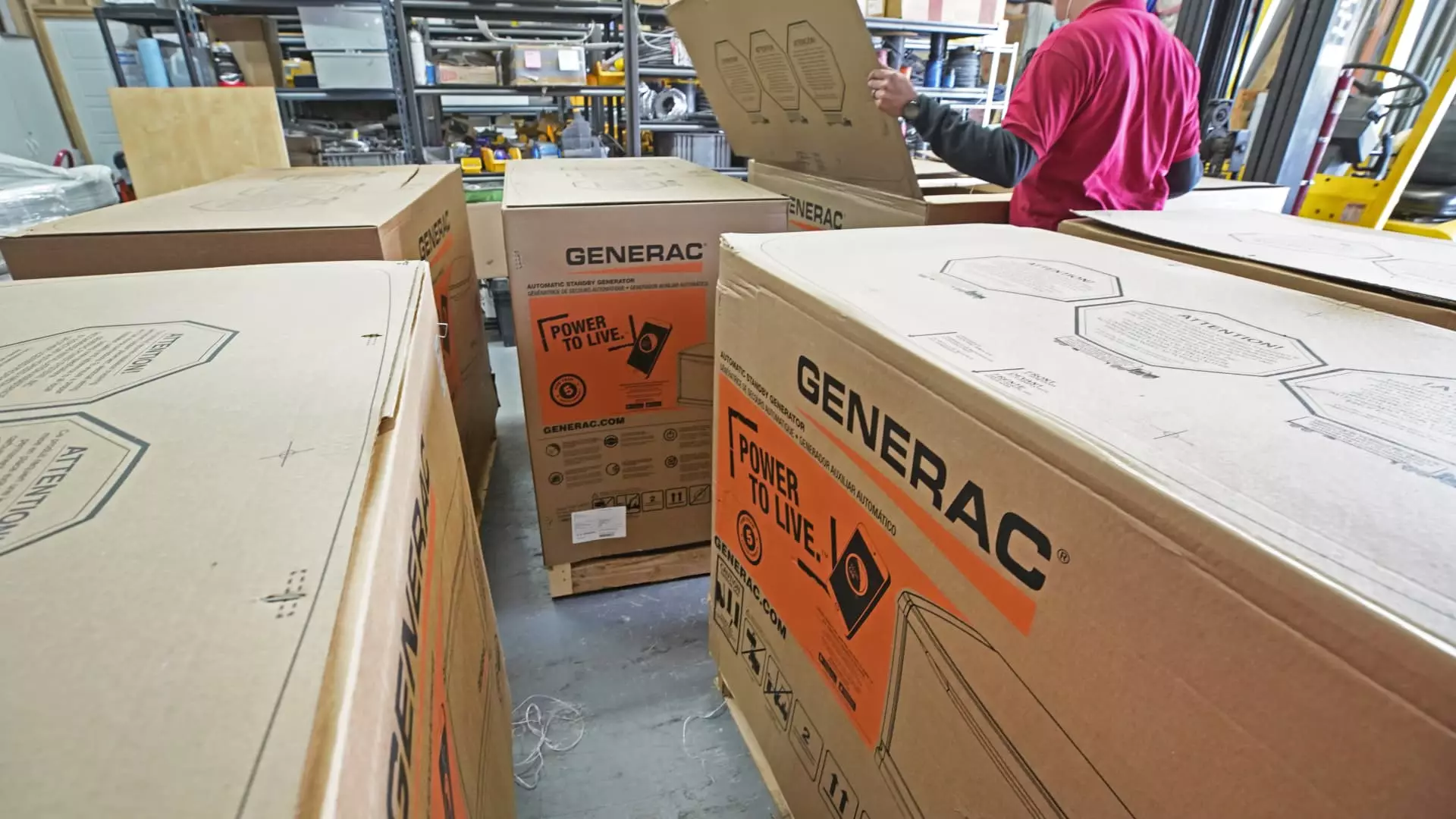In the current tumult of unprecedented heat waves and the looming threat of hurricanes, companies like Generac are experiencing an impressive surge in their stock prices. This uptick, marking nearly a 12% rise in just one week, signals more than mere investor optimism; it echoes a deep-seated anxiety about our deteriorating energy infrastructure and the continuous strain of climate change. As heat warnings envelop 130 million Americans, the harsh truth is that our power grid—already on life support—is about to face an unprecedented test. We are not just watching a company profit from the chaos but witnessing the painful repercussions of neglecting our energy systems.
The prediction of 13 to 19 named storms this Atlantic hurricane season, with the potential for several to escalate into major hurricanes, should be a wake-up call. We’ve been too complacent about our increasing reliance on backup generators as the climate trends worsen. Generac’s stock may be flourishing now, but at what long-term cost to our collective infrastructure? The urgency for resilient energy solutions has become painfully clear; we are past the point of reaction and now teetering on the brink of disaster.
Our Aging Power Grid: A Recipe for Disaster
As climate-driven crises pile onto our already beleaguered power grid, the grim numbers reveal a troubling reality. Research suggests that the risk of power outages linked to hurricanes could increase by over 50% in certain regions of the United States. Generac’s CEO, Aaron Jagdfeld, strikes an ominous note when he warns that our energy systems are becoming “massively critical” amidst escalating severe weather conditions and the new demands created by data centers. It’s become painfully evident: our intolerable dependency on dated energy infrastructure is eating away at our resilience and capacity to adapt.
Utility companies stand to benefit financially from this burgeoning demand, depicted by Bank of America’s estimation of a 2.5% growth in electrical demand over the next decade. Yet, this anticipated financial performance feels more like a hidden crisis masked as progress. The optimistic forecasts propagated by banks appear like band-aids on a gaping wound; they present an illusion of stability while we’re actually hurtling toward a reckoning.
The Illusions of Market Performance and Infrastructure Neglect
While utility stocks outperform the S&P 500, we must ask ourselves whether this performance is sustainable in light of our failing infrastructure. Favoring certain stocks simply because they are “laggards” is the kind of strategic short-sightedness that political and economic elites often embrace. Yes, companies like Sempra, Alliant Energy, and Northwestern Energy may provide immediate opportunities for investors, but advocating for such wrench-like maneuvers reveals a failure to acknowledge the scale of our energy crisis.
The real issue isn’t just about which companies will outperform their competitors in the stock market but how we will actually generate and sustain the energy we need as climate perturbations increase. Investing in stocks might offer short-term gains, but these financial wins don’t reflect a comprehensive, forward-thinking plan to bolster our energy infrastructure against the inexorable forces of nature that we have, frankly, ignored for too long.
The Broader Implications for Our Future
As we find ourselves ensnared in this unfolding energy quandary, the urgent question is whether stakeholders in the energy sector will prioritize genuine reform over profit margins. It’s time for a paradigm shift, but it requires more than financial speculation on power stocks. It requires a commitment to modernizing our energy grid and investing in sustainable solutions that can withstand the climatic calamities to come.
Generac’s recent success highlights an alarming trend: Americans are becoming increasingly reliant on makeshift, short-term energy solutions. It’s a dangerous cycle that suggests we might be more invested in the temporary alleviation of our discomfort than in seeking long-term sustainability. In light of impending storms and rising temperatures, one can only hope that the lessons learned from this early season serve to galvanize not just investors but lawmakers and energy stakeholders into taking actionable steps toward a more resilient future.

